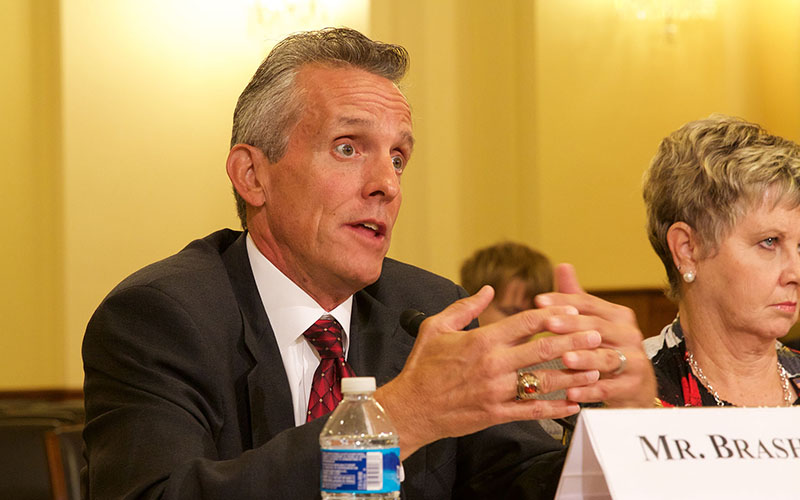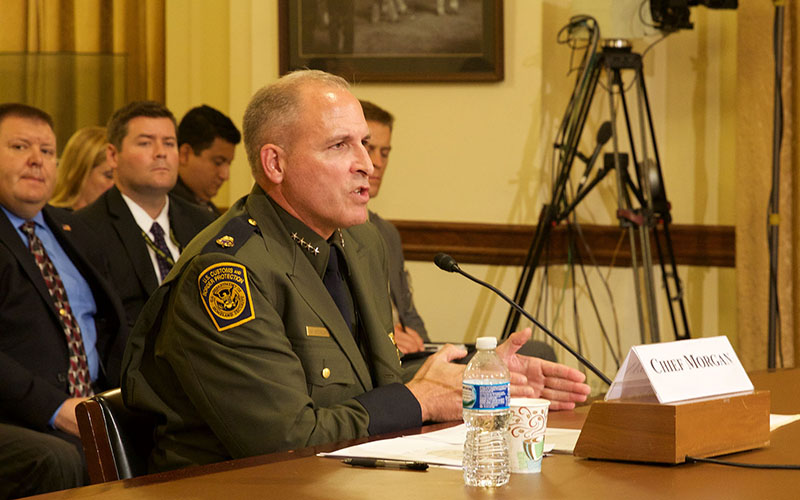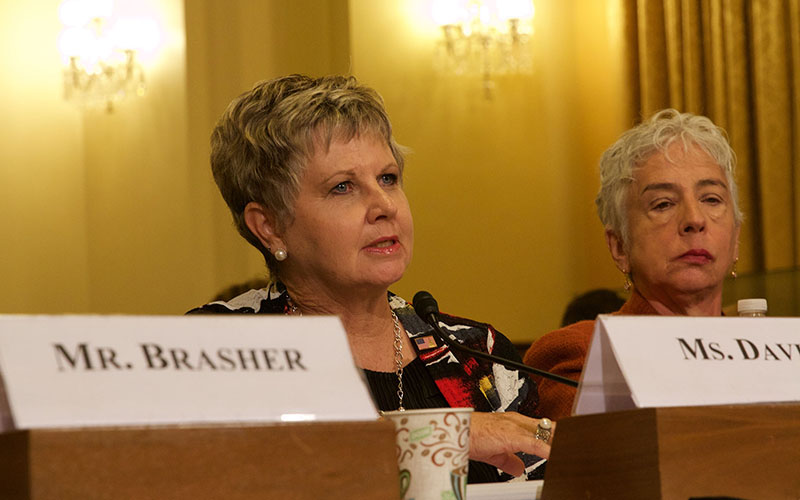
Tubac resident Gary Brasher told lawmakers that the current Border Patrol policy that focuses some efforts has instead given immigrants “free run” of a 25-mile zone in the U.S. (Photo by Jessica Suerth/Cronkite News)

New Border Patrol Chief Mark Morgan defended the agency’s “Defense in Depth” policy, saying it allows an effective use of scarce resources along the border. (Photo by Jessica Suerth/Cronkite News)

Peggy Davis, who lives near Tombstone, said Border Patrol agents need more resources and better data collection to help secure the border, which she said is not happening now. (Photo by Jessica Suerth/Cronkite News)
WASHINGTON – Two southern Arizona residents told a House panel Tuesday that their communities have grown more dangerous due to what they see as a lack of security at the Arizona-Mexico border.
Border Patrol agents, contrary to their name, can set up checkpoints up to 100 miles inland from the border under a strategy called “Defense in Depth.”
Peggy Davis and Gary Brasher told a House Homeland Security subcommittee that they believe inland checkpoint operations have opened up miles of rural land to violent trespassers, giving them what Brasher called “free run” of the 25-mile area that Border Patrol does not staff.
“The unfortunate thing for those of us that live there is that that’s where we live,” said Brasher, a Tubac resident. “That’s where we work, that’s where our children go to school.”
But Border Patrol Chief Mark Morgan said checkpoints are an effective use of scarce resources when there is a low ratio of agents to miles of border.
“I need to make sure that we have the resources to drive intelligence, gather intelligence, disseminate intelligence,” he said. “To continue to drive those operations to, hopefully as a counter-network approach, take the fight before they get to the border.”
The hearing before the Subcommittee on Border and Maritime Security was called to examine shortcomings of the Defense in Depth strategy, which proponents argue lets agents drive illegal activity from urban areas into rural communities, where they are more easily uncovered.
Morgan said this approach maximizes available resources to “improve our comprehensive understanding of the threat environment, to increase our ability to rapidly respond to threats, and to strengthen enforcement.”
-Cronkite News video by Sabella Scalise
Davis and Brasher argued that Border Patrol could use more resources, pointing to a need for better data collection, body cameras, faster response units and more border agents.
Without those necessary resources, they said, the checkpoints are not efficient enough and allow violent criminals to slip through the gaps.
Davis, who lives near Tombstone, said “illegals” have trashed her ranch, robbed her son and, in 2010, murdered her friend, rancher Robert Krentz. Police have not identified Krentz’s killer, but believe it might have been the work of a drug smuggler, not an illegal immigrant, according to published reports.
Despite heated campaign rhetoric that has painted Mexican immigrants as rapists and drug smugglers, a Wilson Center study found that violent crime in border states declined by 25 percent from 2000 to 2010.
But Rep. Martha McSally, R-Tucson, said that Border Patrol can still improve operations in the area.
McSally, the subcommittee chairwoman, said she does not want Border Patrol agents to “link arms across all 2,000 miles of the border,” but she would like to see the agency deploy its resources directly on the border.
“Our enforcement posture should be arranged with the intent of anticipating, deterring, and stopping most illicit activity before it enters our communities, using the overwhelming majority of agents and technology as close to the line as terrain, access, and agent safety will allow,” she said.
Morgan, who has been on the job only two months, said he needs time to look at the issue, but committed to doing so.
McSally welcomed that commitment as well as Morgan’s opportunity to take a “fresh look” at the situation and improve communication between the agency and the subcommittee.
“Better to move the line of scrimmage and improve data,” McSally said.